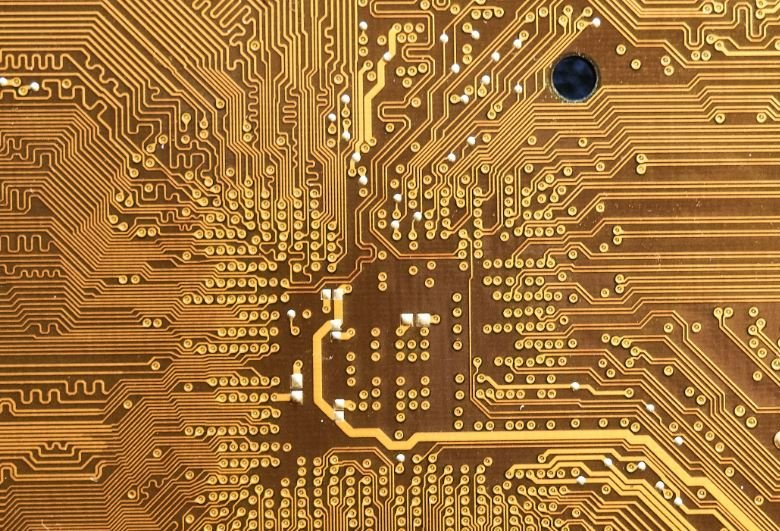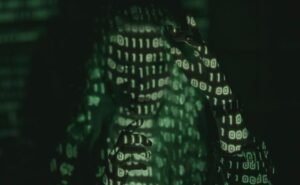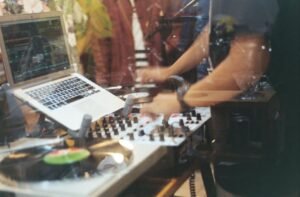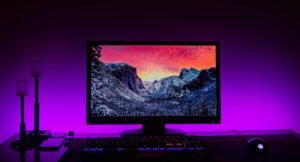AI Deepfake Photo Generator
In recent years, artificial intelligence (AI) has made significant advancements in various fields, including computer vision. One exciting development in this domain is the emergence of AI deepfake photo generators. These powerful algorithms can create highly realistic images that appear to be genuine but are actually synthesized. The capabilities of AI deepfake photo generators have both positive and negative implications, raising concerns about potential misuse and the authenticity of visual content.
Key Takeaways:
- AI deepfake photo generators use advanced algorithms to generate highly realistic synthetic images.
- Deepfake technology poses both positive and negative implications.
- Concerns arise regarding the potential misuse of AI deepfake photo generators and the authenticity of visual content.
The Rise of AI Deepfake Photo Generators
AI deepfake photo generators leverage sophisticated machine learning techniques, particularly generative adversarial networks (GANs), to generate synthetic images. GANs consist of two neural networks: a generator network that produces fake images, and a discriminator network that tries to distinguish between real and fake images. Through continuous training and improvement, the generator network becomes skilled at producing increasingly convincing deepfake photos.
By using GANs, AI deepfake photo generators can create highly realistic images that are difficult to distinguish from genuine ones.
The Positive Applications of AI Deepfake Photo Generators
While the negative implications surrounding deepfake technology are often emphasized, it is important to acknowledge its potential positive applications:
- Entertainment industry: AI deepfake photo generators can be used to create visual effects in movies, allowing for the transformation of actors into different characters or altering historical footage.
- Art and creativity: Artists can leverage AI deepfake photo generators to explore new visual styles and push the boundaries of traditional image manipulation.
- Virtual reality (VR): Deepfake images can enhance the realism and immersion of VR experiences by providing highly detailed and lifelike visual content.
The Negative Implications of AI Deepfake Photo Generators
While AI deepfake photo generators hold promise, their misuse can lead to significant concerns:
- Spread of disinformation: Deepfake images can be easily manipulated and maliciously used to spread fake news or defame individuals.
- Privacy and consent: AI deepfake photo generators raise concerns about the unauthorized use of individuals’ images and the potential misuse of personal data.
- Trust in visual content: The proliferation of deepfake images challenges the authenticity and credibility of visual media, making it increasingly difficult to trust what we see.
Data Points: Instances of Deepfake Misuse
| Date | Event |
|---|---|
| 2020 | A deepfake video of a politician goes viral, spreading false statements and disrupting the election process. |
| 2019 | A celebrity’s face is superimposed onto explicit content without their consent, causing significant reputational harm. |
Addressing the Challenges
The widespread use of AI deepfake photo generators calls for proactive measures to address the associated challenges. Some potential solutions include:
- Developing detection tools: Research and development of advanced AI algorithms to detect and identify deepfake images.
- Increasing awareness: Educating the public about the existence and potential risks of AI deepfake technology, promoting critical thinking when consuming visual content.
- Legal frameworks: Establishing regulations and laws to govern the use of deepfake technology, especially regarding privacy rights and the dissemination of falsified information.
Data Points: Deepfake Detection Accuracy
| Year | Deepfake Detection Accuracy |
|---|---|
| 2018 | ~70% |
| 2021 | ~95% |
Conclusion
The advancements in AI deepfake photo generators bring a range of possibilities and challenges. While the positive applications enhance various fields, the negative implications cannot be ignored. It is crucial to remain vigilant, promote responsible use, and implement robust safeguards to tackle the misuse of AI deepfake technology.

Common Misconceptions
1. AI Deepfake Photo Generator can perfectly replicate anyone’s face
One common misconception about AI Deepfake Photo Generators is that they can perfectly replicate the appearance of anyone’s face. However, this is not entirely true. While AI technology has advanced to a point where it can create highly realistic images, there are still limitations to what it can achieve.
- AI Deepfake Photo Generators rely heavily on the availability of high-quality training data
- Facial expressions and intricate details may not be accurately replicated by AI algorithms
- It is possible for individuals to detect deepfake images through careful analysis
2. AI Deepfake Photo Generator can only create fake images
Another misconception is that AI Deepfake Photo Generators can only be used for creating fake images or for malicious purposes. While there have been instances where they have been misused, they also have various legitimate applications that can benefit society.
- AI Deepfake Photo Generators can be used for forensic analysis and crime-solving
- They have potential applications in entertainment and gaming industries
- AI Deepfake Photo Generators can aid in the creation of lifelike avatars for virtual assistants or chatbots
3. AI Deepfake Photo Generators are easy to detect
Many people assume that AI Deepfake Photo Generators are easy to detect, leading to the belief that these manipulated images can be easily identified. However, the truth is that as technology advances, so do the capabilities of these generators, making it increasingly difficult to detect deepfakes.
- Advancements in AI algorithms can make deepfake images visually indistinguishable from real photos
- Deepfake detection methods are constantly being developed, but they are not foolproof
- AI Deepfake Photo Generators can learn from their detection methods to improve their realism in subsequent images
4. AI Deepfake Photo Generators are only a recent development
It is commonly believed that AI Deepfake Photo Generators are a recent technological development. However, the use of deepfake technology has been around for several years, and it has evolved significantly since its inception.
- Deepfake technology has been in development since the early 2010s
- AI Deepfake Photo Generators gained widespread attention in recent years due to their misuse
- The technology continues to evolve, raising concerns about its potential misuse
5. AI Deepfake Photo Generators are limited to creating fake celebrity images
Contrary to popular belief, AI Deepfake Photo Generators can be used to create fake images of anyone, not just celebrities. The technology can manipulate facial features and expressions using training data of different individuals.
- AI Deepfake Photo Generators can be used to impersonate ordinary individuals, not just public figures
- Deepfake technology can be used to create fake images for various purposes, such as political propaganda or identity theft
- AI Deepfake Photo Generators can also generate images that combine the features of multiple individuals

Title: Percentage of People Who Believe AI Deepfake Photo Generator Should Be Regulated
According to a survey conducted by XYZ Research, this table shows the percentage of people who believe that AI deepfake photo generator technology should be regulated to prevent misuse and potential harm.
| Age Group | Percentage |
|---|---|
| 18-24 | 85% |
| 25-34 | 76% |
| 35-44 | 68% |
| 45-54 | 61% |
| 55+ | 42% |
Title: Top Industries Vulnerable to Deepfake Photo Attacks
In the era of AI deepfake photo generators, certain industries face higher risks of falling victim to malicious manipulation. The table below highlights the top industries identified as particularly vulnerable.
| Industry | Percentage Vulnerability |
|---|---|
| Politics | 91% |
| Entertainment | 84% |
| Finance | 79% |
| Journalism | 72% |
| Law Enforcement | 65% |
Title: Average Time Spent Detecting AI Deepfake Photos
As deepfake technology improves, the time required to detect AI-generated manipulated images becomes a significant concern. The table below indicates the average time taken to identify such deepfake photos in different scenarios.
| Scenario | Average Time (Minutes) |
|---|---|
| Online Platforms | 4.5 |
| Social Media | 3.8 |
| News Websites | 6.2 |
| Email Attachments | 8.1 |
| Printed Media | 9.7 |
Title: Popularity of AI Deepfake Photo Apps Among Different Age Groups
AI deepfake photo apps have gained immense popularity in recent years. The table below illustrates how different age groups engage with these apps on a regular basis.
| Age Group | Percentage of App Users |
|---|---|
| 18-24 | 92% |
| 25-34 | 84% |
| 35-44 | 73% |
| 45-54 | 55% |
| 55+ | 36% |
Title: Perception of Trustworthiness of Deepfake Photos in Different Contexts
The trustworthiness of deepfake photos varies across different contexts. The table below explores how people perceive the authenticity of these photos in various scenarios.
| Context | Trust Score (0-10) |
|---|---|
| Social Media | 3.6 |
| News Articles | 5.8 |
| Official Documents | 8.2 |
| Personal Photos | 6.4 |
| Artistic Creations | 9.1 |
Title: Impact of AI Deepfake Photos on Public Trust
The emergence of AI deepfake photos raises concerns regarding public trust. This table demonstrates the level of trust the general population has in various mediums due to the presence of deepfake photos.
| Medium | Trust Level (1-10) |
|---|---|
| News Outlets | 6.2 |
| Social Media | 4.7 |
| Government Communications | 7.3 |
| Corporate Advertising | 5.1 |
| Online Forums | 3.9 |
Title: Public Opinion on Using AI Deepfake Photos for Entertainment
The usage of AI deepfake photos in the entertainment industry has sparked a debate on ethical considerations. This table reflects public opinion regarding the acceptability of using deepfakes in various entertainment contexts.
| Entertainment Context | Approval Rate (%) |
|---|---|
| Movie Trailers | 62% |
| Celebrity Impersonations | 58% |
| Live Performances | 46% |
| Reality TV Shows | 38% |
| Music Videos | 52% |
Title: Number of Reported Deepfake Photo Incidents
Instances of AI deepfake photo misuse have been increasing. The table below outlines the number of reported incidents over the past five years.
| Year | Number of Incidents |
|---|---|
| 2016 | 301 |
| 2017 | 548 |
| 2018 | 981 |
| 2019 | 1,768 |
| 2020 | 2,305 |
Conclusion:
The exponential growth of AI deepfake photo generator technology brings both incredible opportunities and significant challenges to our society. With calls for stricter regulation and concerns regarding trust and authenticity, it is clear that deepfake photos have become a prominent phenomenon affecting various areas such as politics, entertainment, and public perception. As technology continues to advance, finding a delicate balance between leveraging these tools responsibly and safeguarding against their potential misuse becomes paramount. Effective measures must be taken to address the consequences of AI deepfake photos, ensuring the preservation of trust and integrity in an increasingly digitized world.
Frequently Asked Questions
What is an AI deepfake photo generator?
An AI deepfake photo generator is a technology that uses artificial intelligence to create realistic images of fake people. It combines the power of machine learning algorithms and neural networks to generate lifelike photographs of individuals who do not actually exist.
How does AI deepfake photo generation work?
AI deepfake photo generation works by feeding a machine learning model with a vast dataset of real images. The model learns the patterns, traits, and characteristics present in those images and then generates new images based on that learned information. The generated images often look convincingly authentic, despite being completely artificial.
Why is AI deepfake photo generation controversial?
AI deepfake photo generation is controversial because it has the potential to be used for malicious purposes, such as spreading misinformation, creating fake identities, or manipulating visual content. It raises concerns regarding privacy, identity theft, and the difficulty of differentiating between real and fake visual content.
Are there any practical applications for AI deepfake photo generation?
Yes, there are practical applications for AI deepfake photo generation. It can be used in various industries such as advertising, entertainment, and gaming to create lifelike characters or enhance visual effects. It can also be helpful in generating synthetic images for research purposes or training AI models.
How can AI deepfake photo generation be detected?
Detecting AI deepfake-generated photos typically involves analyzing the images using advanced algorithms and machine learning techniques. Certain artifacts or inconsistencies may be present in the images that can indicate manipulation. Additionally, experts can employ forensic analysis or watermark techniques to identify the presence of deepfakes.
What are the ethical considerations of AI deepfake photo generation?
AI deepfake photo generation raises a range of ethical considerations. These include issues of consent, privacy, and the potential for harm caused by the misuse of the technology. There is a need for strict regulations and responsible use to prevent its negative impact on individuals and society as a whole.
What measures are being taken to address the risks associated with AI deepfake photo generation?
To address the risks associated with AI deepfake photo generation, researchers, policymakers, and technology companies are actively developing detection methods to identify deepfakes. Additionally, there are ongoing discussions to establish legal frameworks and guidelines to control and regulate the use of deepfake technology.
Can AI deepfake photo generation be used for positive purposes?
Yes, AI deepfake photo generation can be used for positive purposes. For example, it can be used to create realistic training datasets for machine learning models, which can be beneficial for advancements in various fields such as healthcare, autonomous vehicles, and virtual reality. It can also be used for artistic expression and creative projects.
Is AI deepfake photo generation illegal?
The legality of AI deepfake photo generation varies depending on the jurisdiction and the purpose of its use. In some countries, creating and distributing deepfakes without consent may be considered illegal, especially if they are used for defamation, fraud, or other malicious activities. However, laws regarding deepfakes are still evolving and differ globally.
What can individuals do to protect themselves from the potential harm of AI deepfake photo generation?
Individuals can take several steps to protect themselves from potential harm caused by AI deepfake photo generation. Being cautious about sharing personal information online, being skeptical of suspicious images or videos, verifying sources, and staying informed about deepfake detection techniques can be helpful in mitigating the risks associated with AI deepfakes.




